10 things you didn’t know about the Rockefeller Center Christmas Tree
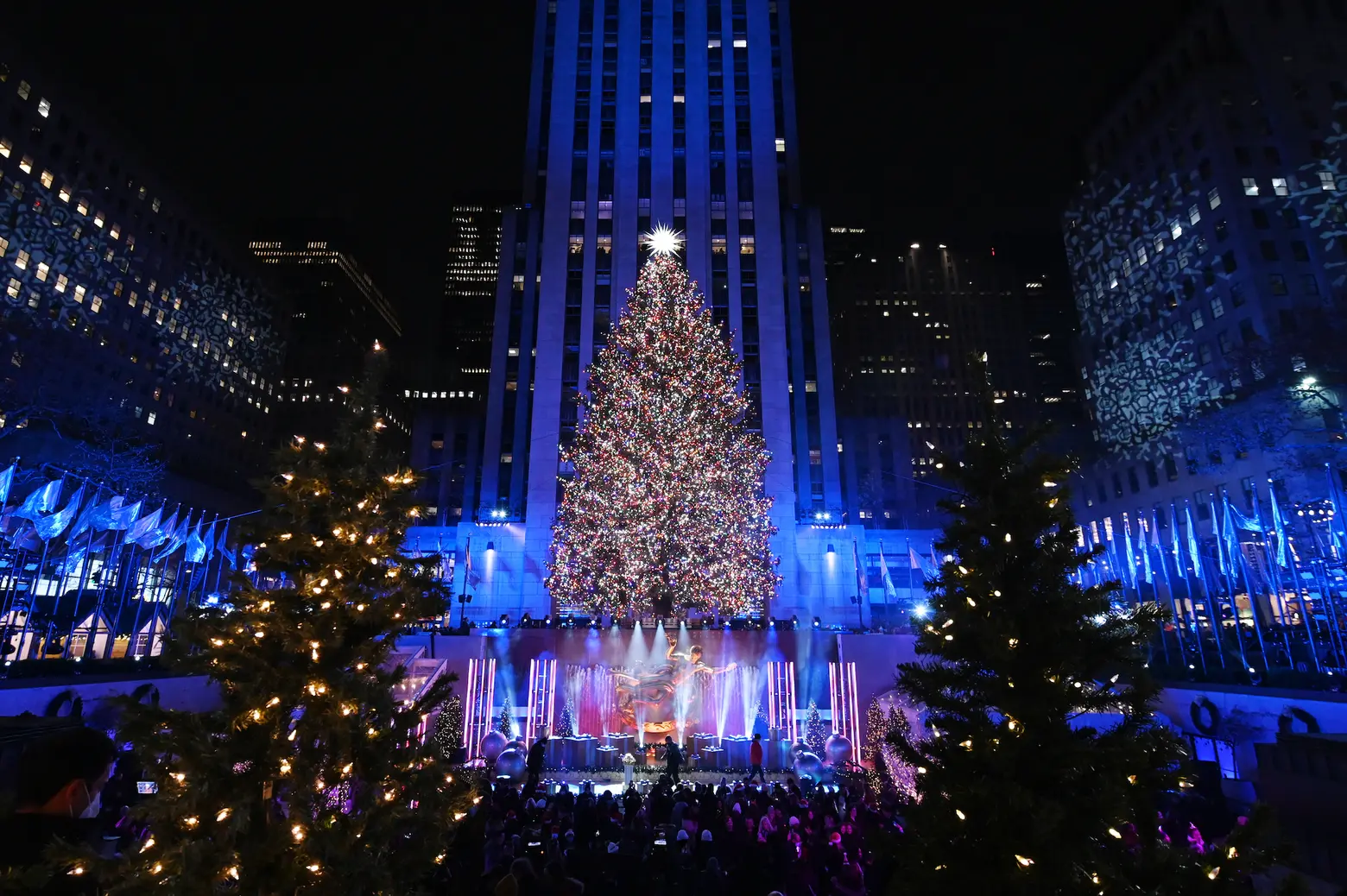
Photo of the 2021 Rockefeller Center Christmas Tree courtesy of Diane Bondareff/AP Images for Tishman Speyer
New York City’s annual lighting of the Rockefeller Center Christmas Tree has been a favorite holiday tradition for New Yorkers and visitors alike since its inception in the early 1930s. This year marks the 93rd anniversary of the festive tradition that draws hundreds of thousands of people daily to the area around Fifth Avenue. From the tree’s humble beginnings as a place to gather during the Great Depression to its 50,000 sparkling lights and 900-pound Swarovski crystal-covered star topper, here are 10 things you might not know about the Rockefeller Center Christmas Tree.
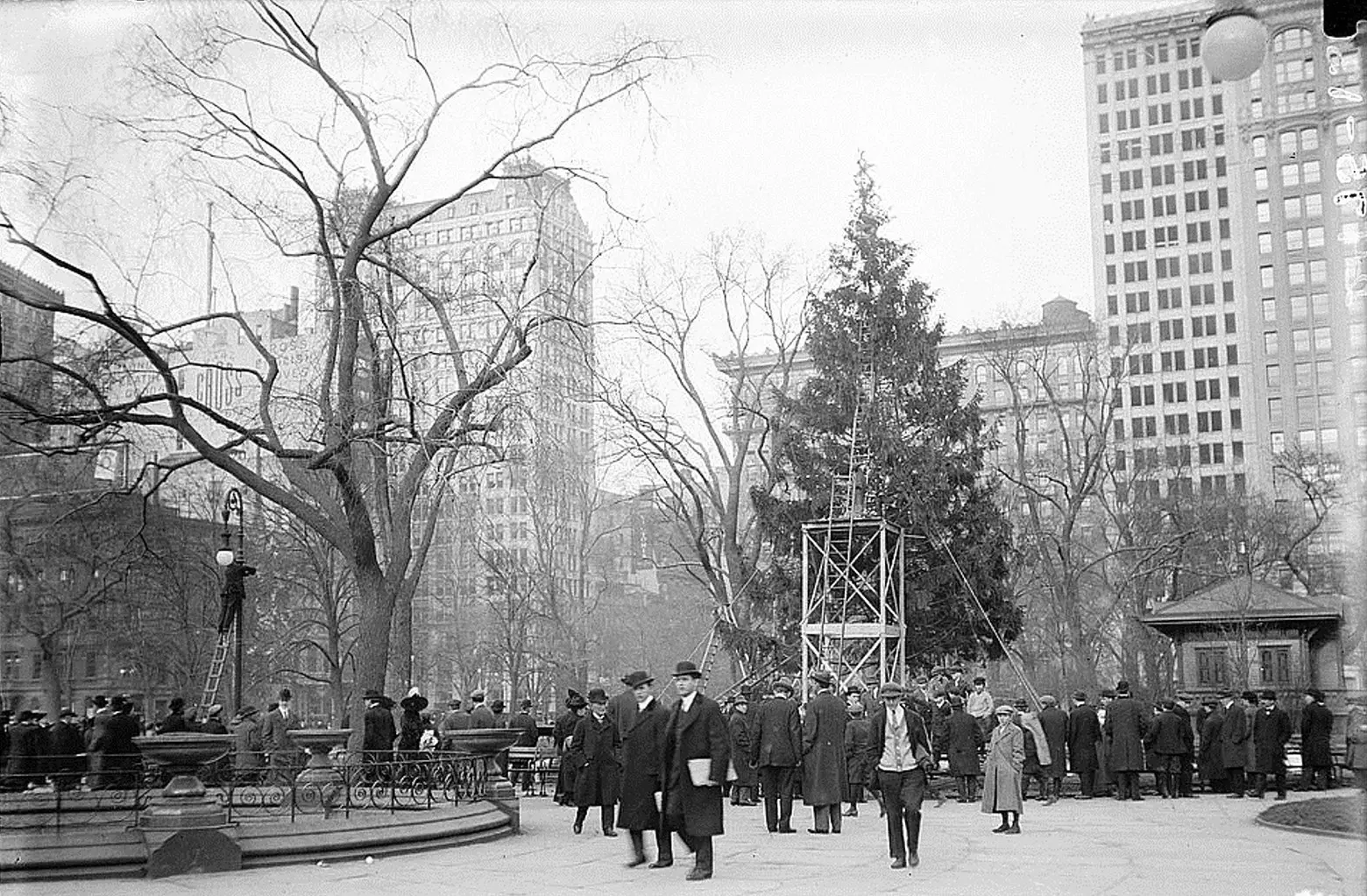
Bain News Service, Publisher. Xmas tree in Madison Sq. Park, N.Y.C., ca. 1910. [Between and Ca. 1915] Photograph. Library of Congress Digital Collections.
1. It wasn’t New York City’s first public Christmas tree.
New York City’s first public Christmas tree was actually located in Manhattan’s Madison Square Park. The tree arrived in Madison Square Park on December 21, 1912, measuring 60 feet tall. It was adorned with 2,300 colored electric bulbs donated by the Edison Company.
The idea for a public tree in the city came from Emilie D. Lee Herreshoff, the wife of a prominent chemical scientist. She proposed a way that would allow everyone, even those who couldn’t afford their own tree, to celebrate the holiday season and participate in the tree lighting. On Christmas Eve of 1912, Madison Square Park hosted the country’s first-ever public Christmas tree lighting.
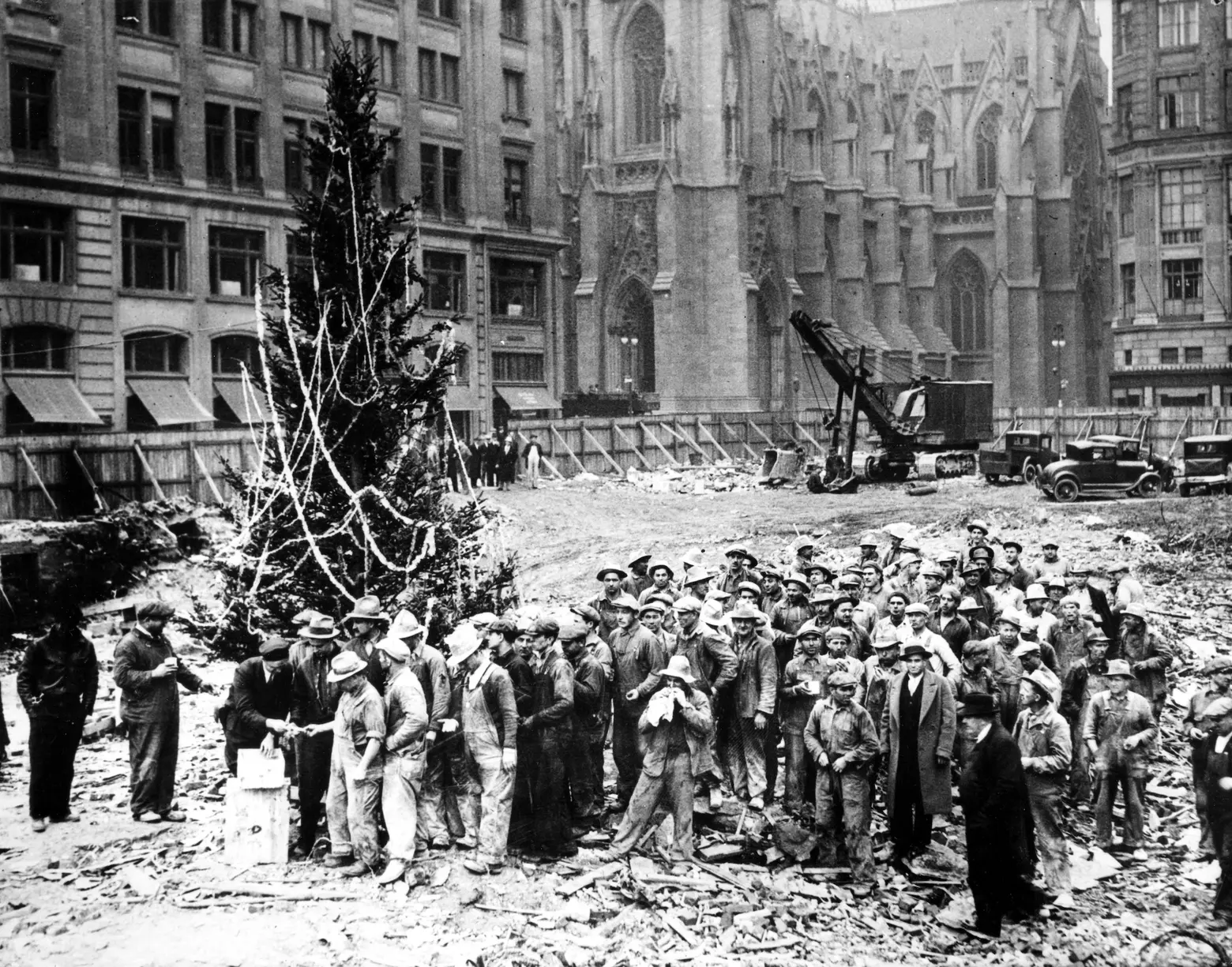
Photo of the 1931 tree, courtesy of Tishman Speyer
2. In 1931, workers at Rockefeller Center pooled their money together to buy a Christmas tree.
The first Rockefeller Center Christmas Tree was a modest 20-foot balsam fir adorned with strings of cranberries, garlands of paper, and a few tin cans. The tree was raised by Italian-American workers after they cleared the area during the Great Depression-era construction of Rockefeller Center. Workers pooled their money together, with the garlands of paper made by some of the worker’s families. The workers ended up lining up at the tree to receive their paychecks.
Two years later marked the start of a tradition that resembles the one seen today, with the 1933 tree measuring 50 feet tall. Ever since then, the yearly holiday tradition has served as a place to gather, reflect, and celebrate.
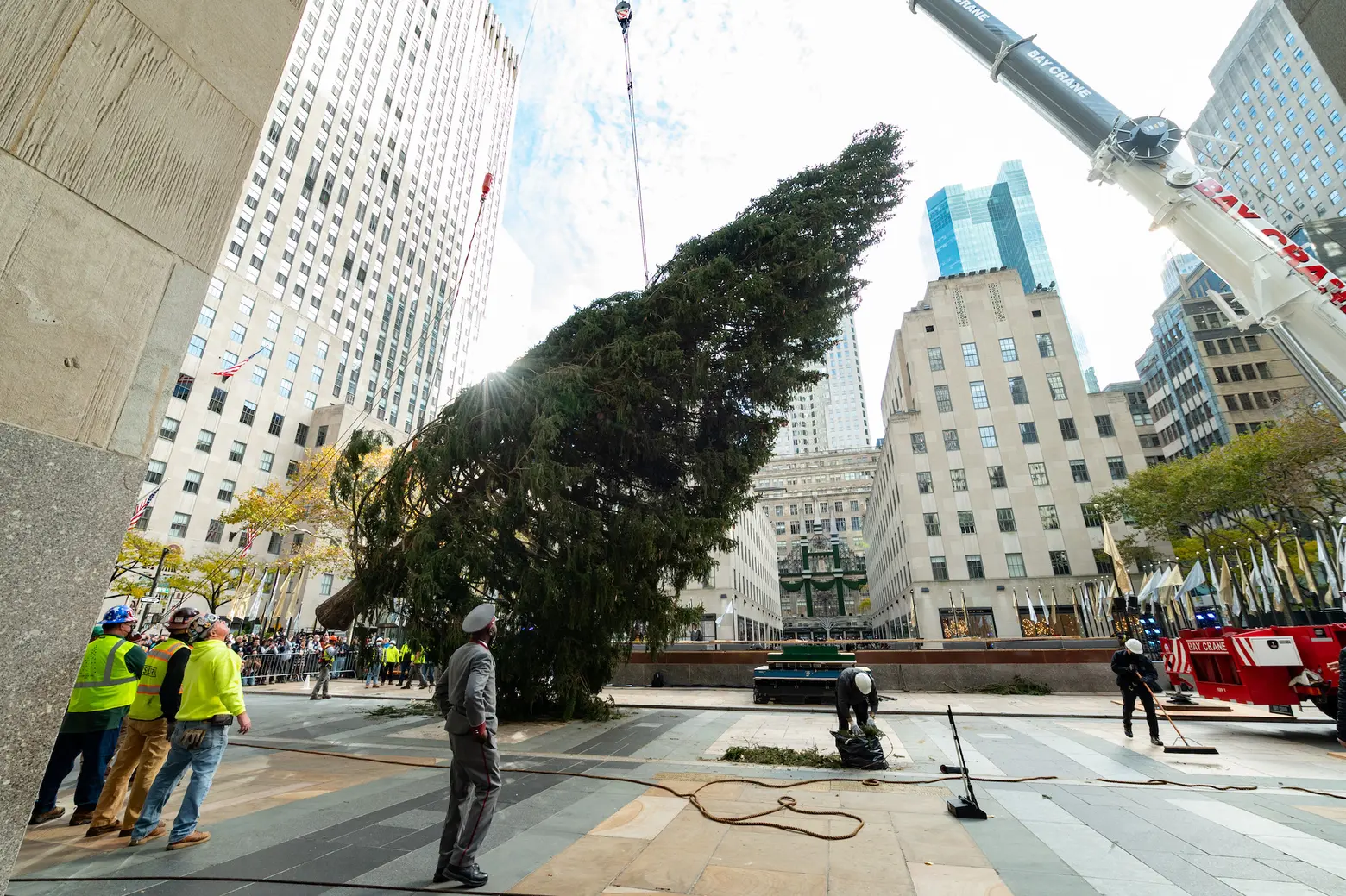
Photo courtesy of Diane Bondareff/AP Images for Tishman Speyer
3. The tree usually arrives by flatbed truck and is hoisted by a crane into place. But in 1977, the tree actually traveled down the Hudson River via barge.
After being scouted, the tree is cut down and transported on a custom trailer to Rockefeller Center. After it arrives, the tree is hoisted up by a crane and supported by four guy wires at its midpoint and by a steel spike in its base. After being set in place, a team of workers installs scaffolding around the tree to install the lights and other decorations.
There have been a few occasions where the tree has traveled to the city using a different mode of transportation. In 1977, the tree traveled down the Hudson River from Stony Point on a barge, and in 1998 it was flown in from Richfield, Ohio on the world’s largest transport plane.
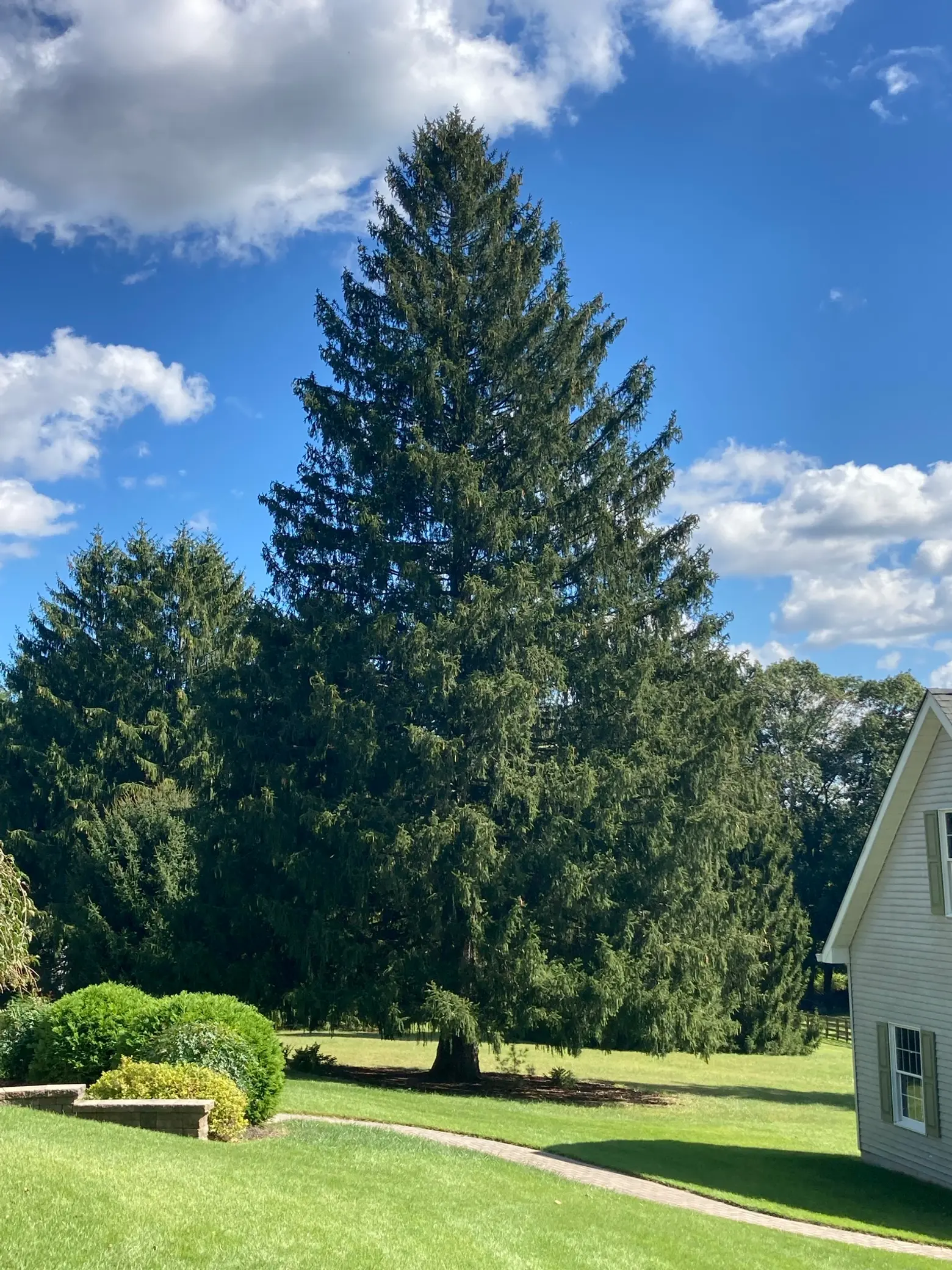
Photo courtesy of Tishman Speyer
4. The famed tree traditionally is a Norway spruce.
The reasoning behind the selection of a Norway spruce as the Rockefeller Center Christmas Tree has to do with its sturdy characteristics. Norway spruce trees are known to have straight trunks and are particularly resistant to wind. They also range between 80 and 100 feet tall, matching Rockefeller Center’s tree height requirement. And most importantly, Norway spruces have the perfect pyramid shape for a Christmas tree. According to the History Channel, the Norway spruces’ tie to Christmas goes as far back as the 16th century in Germany, the country where the concept of a Christmas tree originated.
5. When the holiday season ends, the tree is donated to Habitat for Humanity.
When staring at the huge Christmas tree as it sits in Rockefeller Center, you might wonder what happens to it when the holidays are over. In 1971, the tree was recycled for the first time into mulch for nature trails in upper Manhattan. That year’s tree hailed from East Montpelier, Vermont, and measured 65 feet tall. In all, it yielded 30 three-bushel bags of mulch.
The sustainable tradition of recycling the tree didn’t return until 2007, which saw it become an integral of the annual tradition. Every year since then, the tree has been milled into lumber and donated to Habitat for Humanity by Tishman Speyer, the owner and operator of Rockefeller Center.
Other features of the tree that make it more environmentally friendly are its LED lights which use less electricity, and the use of solar panels atop the Rockefeller Center buildings to help power them. The LED lights use 1,200 fewer kilowatt hours of electricity per day than the previous lights, which is enough to power a 2,000-square-foot home for a month.
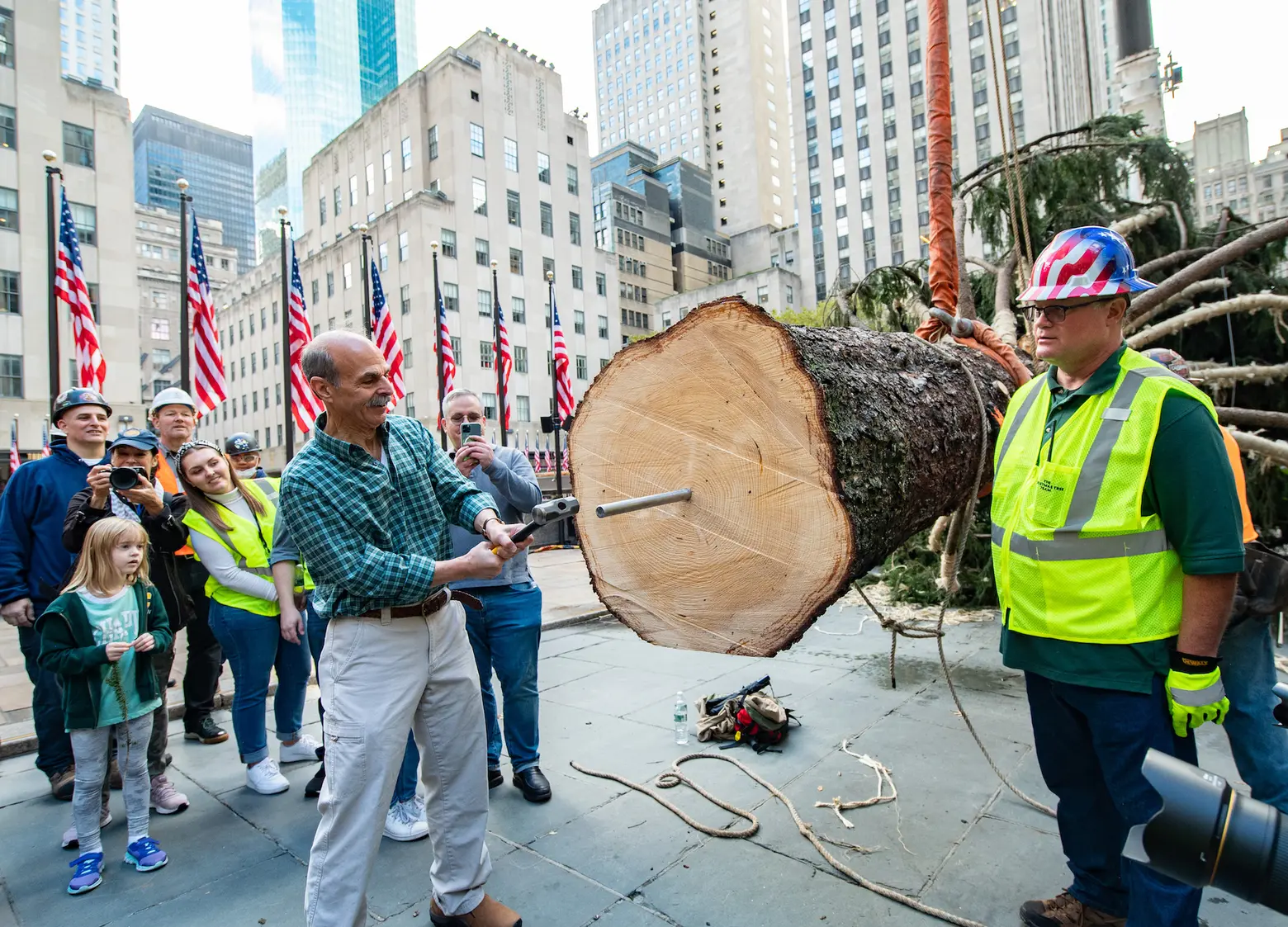 Tree donor Neil Lebowitz drives a spike into the trunk of this year’s tree. Photo courtesy of Diane Bondareff/AP Images for Tishman Speyer
Tree donor Neil Lebowitz drives a spike into the trunk of this year’s tree. Photo courtesy of Diane Bondareff/AP Images for Tishman Speyer
6. The tree can be nominated by its owner.
While the tree is typically scouted by Erik Pauze, Rockefeller Center’s head gardener, tree owners are actually able to nominate their own trees for consideration. In 2015, a family from Gardiner, New York submitted an oversized tree they feared would fall on their house to Rockefeller Center and it ended up being selected as that year’s tree.
7. More than 50,000 energy-efficient LED lights illuminate the tree.
The Rockefeller Center Christmas Tree is adorned with more than 50,000 energy-efficient LED lights that give it its signature sparkle. Those thousands of lights are strung across nearly five miles of wire, or about the same distance as 30 Rockefeller Center to Lower Manhattan’s Battery Park.
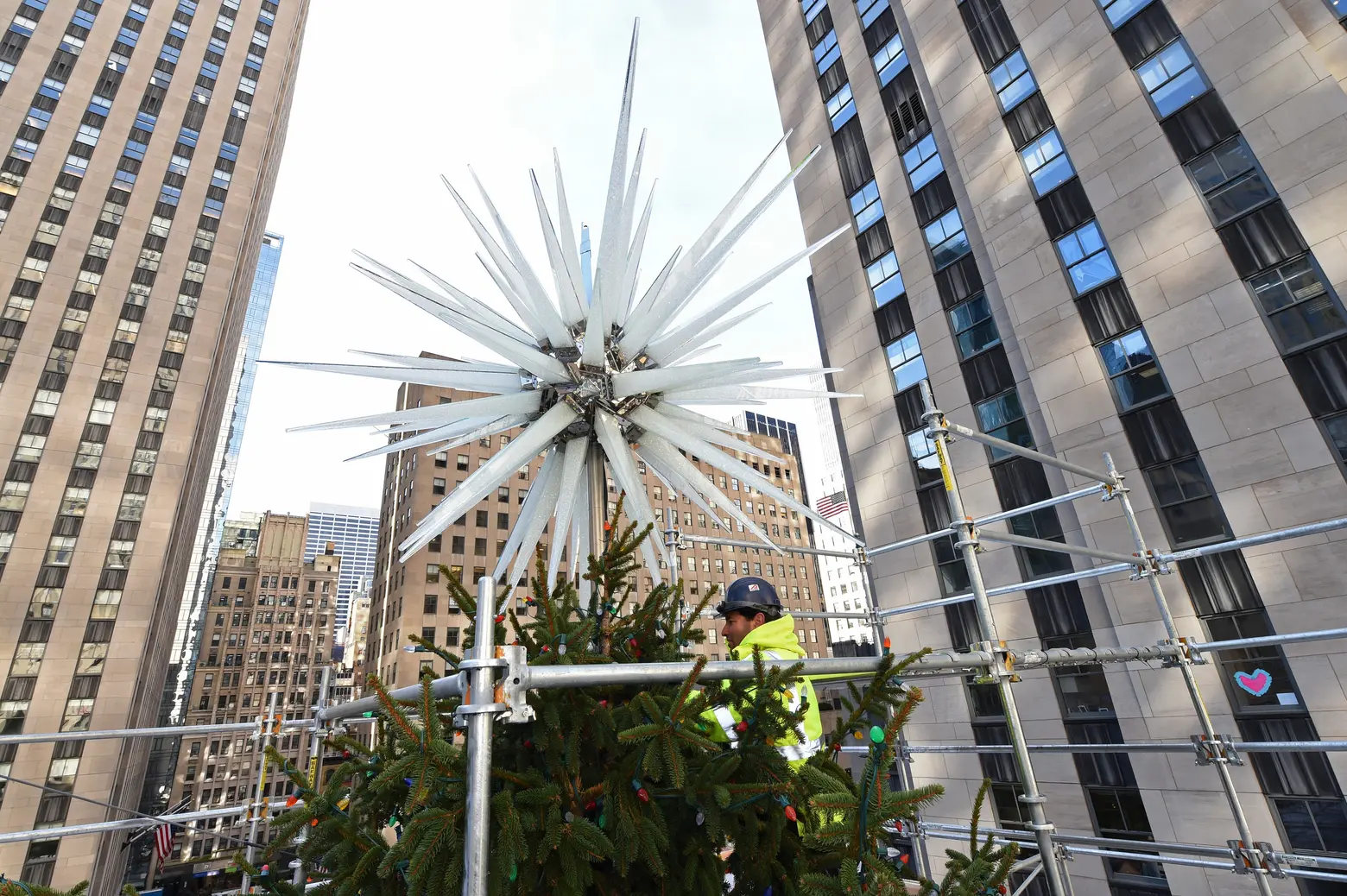
The star made its debut in 2018; Image courtesy of Diane Bondareff/AP Images for Tishman Speyer via TimeOut
8. A famous architect designed the tree’s current crystal topper.
Designed by architect Daniel Libeskind, the star atop the tree includes 70 spikes covered in 3 million Swarovski crystals and is made of shatterproof glass. The crystal topper weighs 900 pounds and measures nine feet, four inches in diameter.
Libeskind described the star as “a symbol that represents our greatest ambitions for hope, unity and peace.” The star made its debut atop the tree in 2018, marking the first time in 14 years that the tree’s topper was replaced.
Libeskind’s star replaced the original crystal topper, which was designed by German artist Michael Hammers for Swarovski in 2004. The 550-pound star featured 25,000 crystals, one million facets, and was 9.5 feet wide.
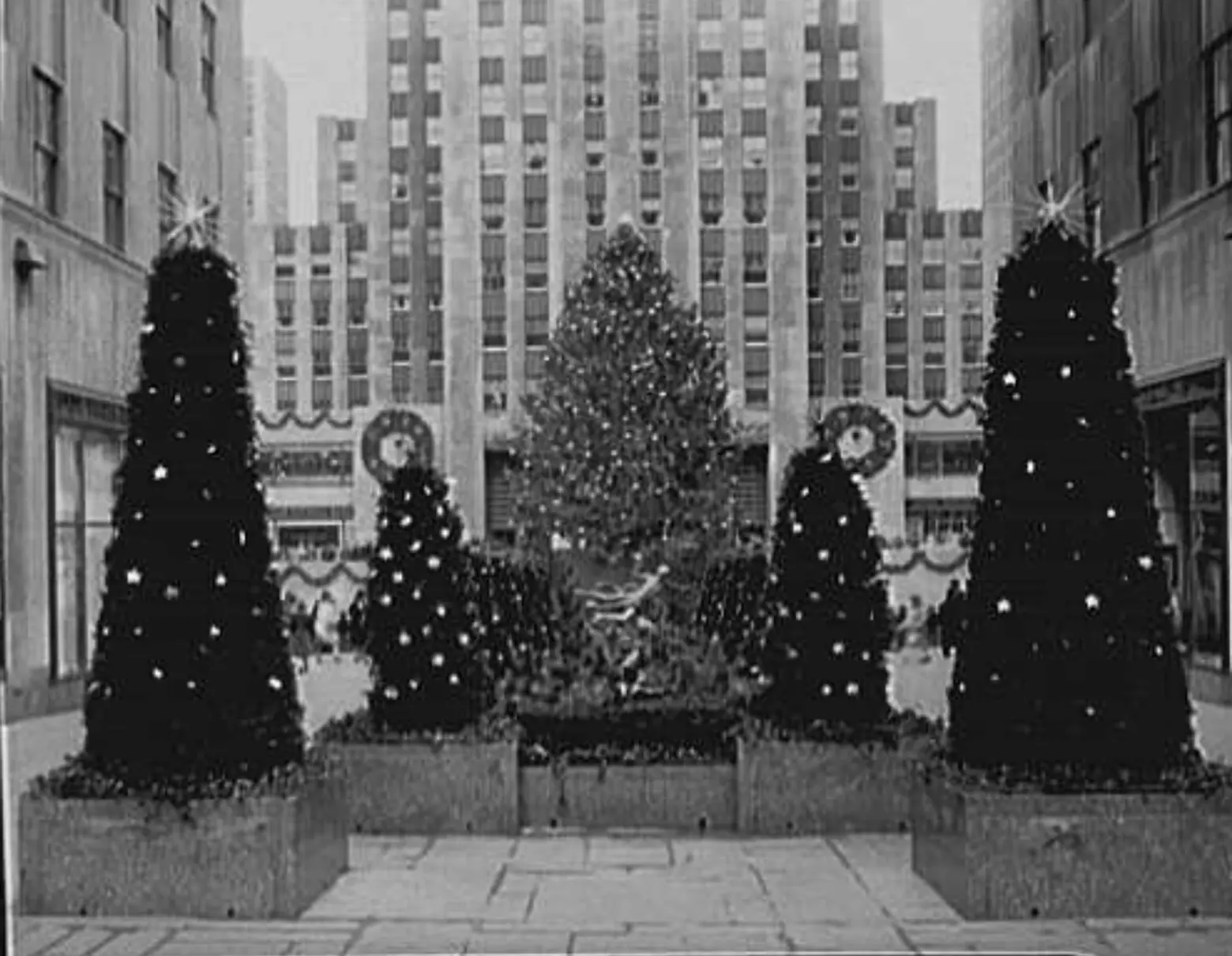
Gottscho-Schleisner, Inc, photographer. Rockefeller Center. Plaza Christmas decorations. United States New York New York State, 1943. Dec. 9. Photograph. Library of Congress Digital Collections.
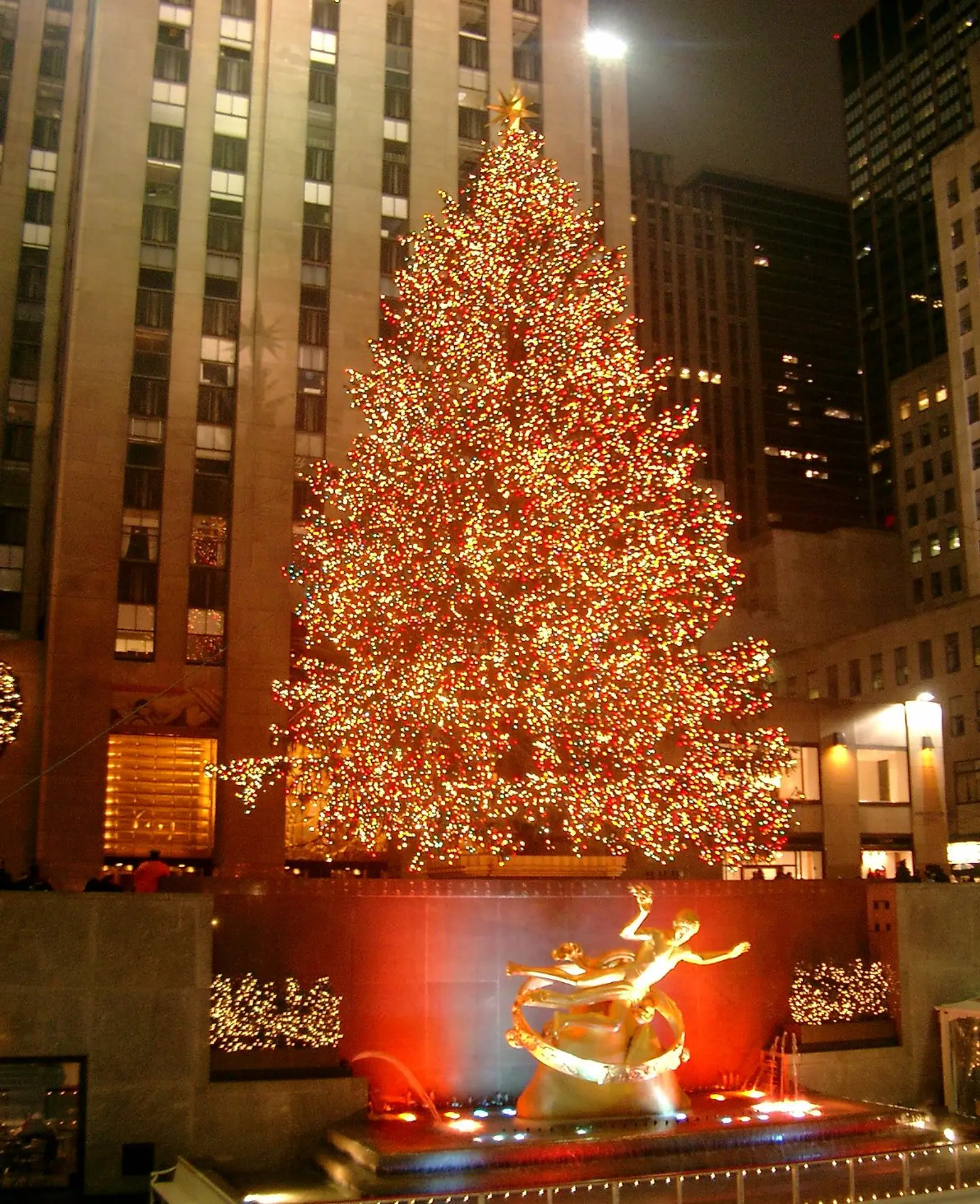
Image via WikiCommons
9. The tree remained unlit during parts of World War II.
The entrance of the United States into World War II saw the Rockefeller Center Christmas Tree undergo a patriotic makeover, straying away from elaborate decorations and instead using a simple array of red, white, and blue along with painted wooden stars. The year 1942 saw the raising of three trees instead of one, each decorated in one of the American flag’s colors. Additionally, no materials used for the war effort could be used for the tree.
Starting in 1944 and until the war ended in 1945, the Rockefeller Center Christmas Tree went unlit due to blackouts being mandated across the city in fear of enemy aerial surveillance. In the year following the war’s end, six ultraviolet light projectors were used to make the tree’s 700 fluorescent globes appear to be glowing in the dark.
Following the September 11 attacks, the tree was once again lit a patriotic red, white, and blue.
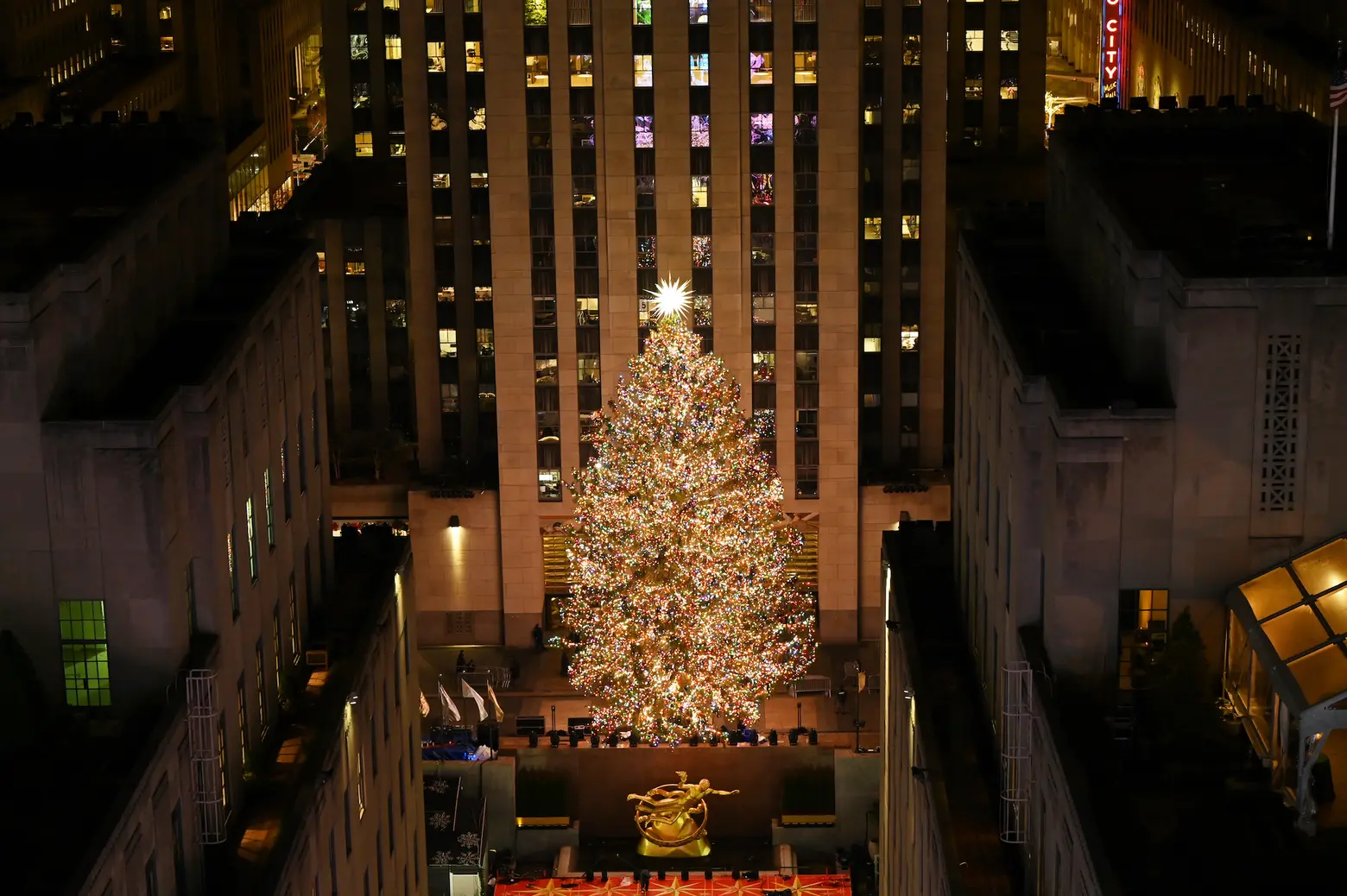
The Rockefeller Center Christmas Tree stands lit during the Rockefeller Center Christmas tree lighting ceremony on Wednesday, Nov. 30, 2022, in New York. Photo: Diane Bondareff/AP Images for Tishman Speyer
10. For the first time since 1959, this year’s colossal tree comes from Massachusetts
The 2024 tree comes from West Stockbridge, Massachusetts. Donated by the Albert Family, the 74-foot-tall tree measures 43 feet wide, weighs roughly 11 tons and is approximately 70 years old. The tree was selected by Rockefeller Center’s head gardener Erik Pauze, who has helped locate and transport the beloved holiday tree for over 30 years. This year’s tree lighting ceremony takes place on Wednesday, December 4. The Rockefeller Center Christmas Tree will be on display until mid-January 2025. The tree is lit 24 hours on Christmas Day and from 5 a.m. to 9 p.m. on New Year’s Eve.
RELATED:
Explore NYC Virtually
Leave a reply
Your email address will not be published.
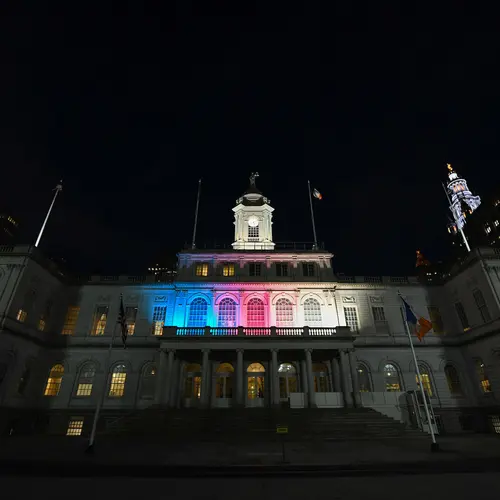
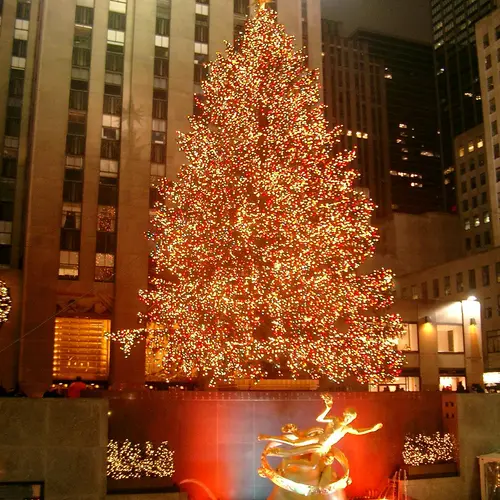
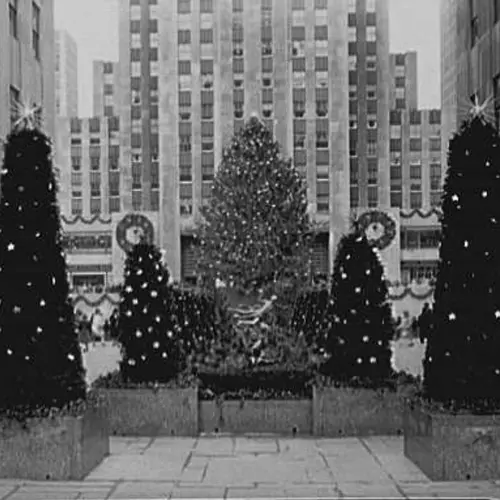
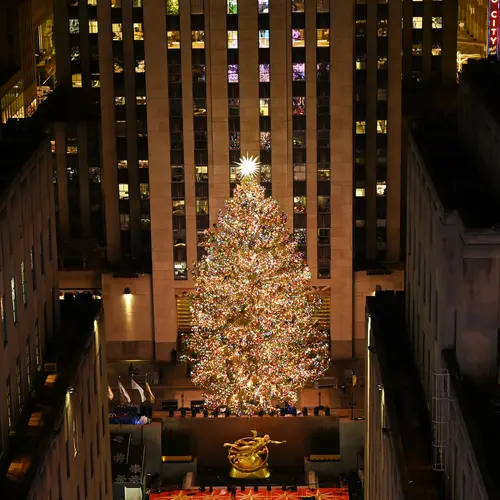

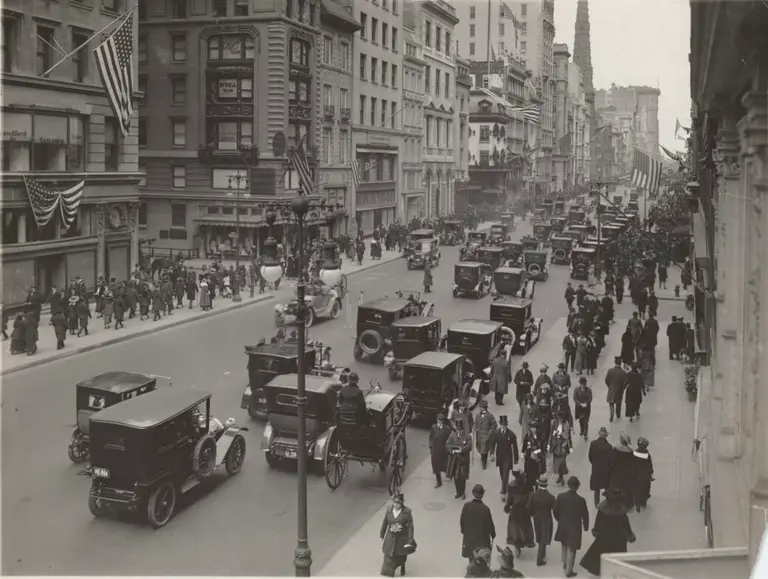

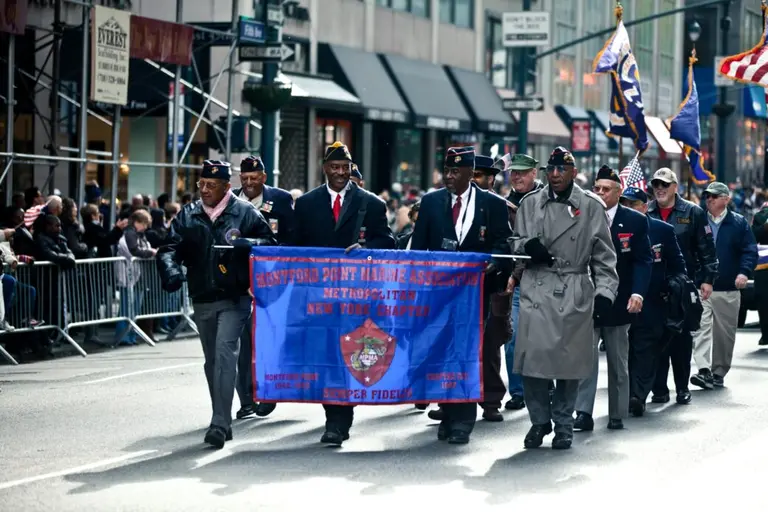










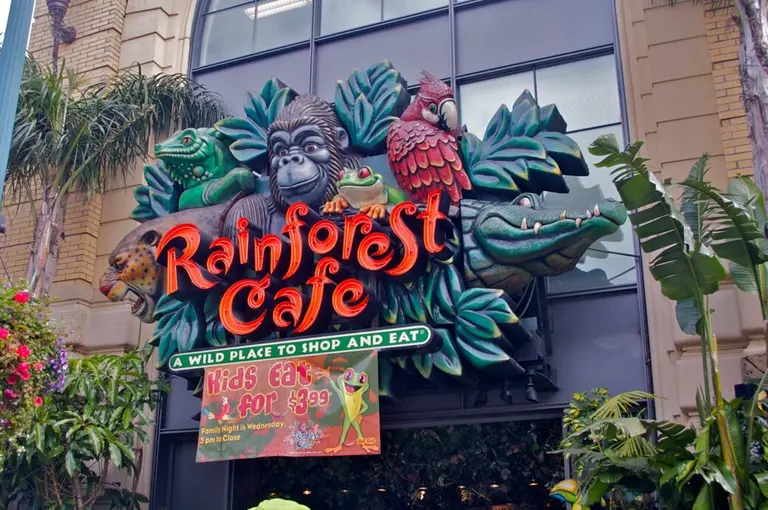

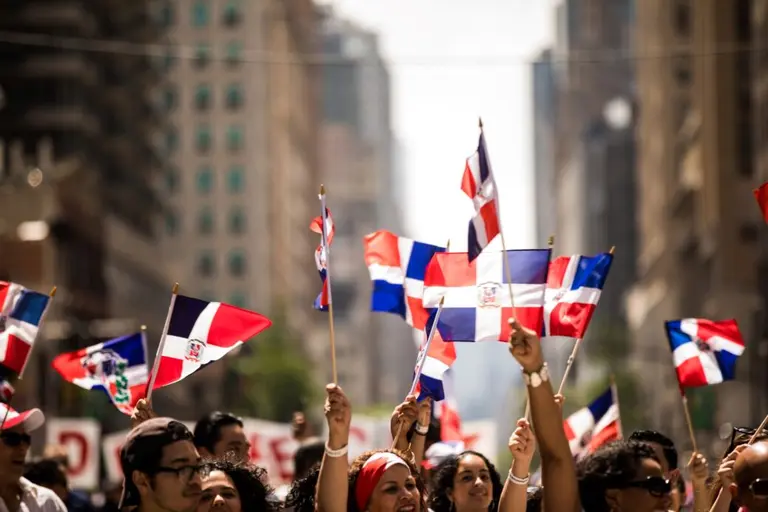












How is the star supported?